
Our Expertise
What are Smart Facilities?
Launched in 2016 by the UNDP, the Smart Facilities initiative integrates technological innovations and renewable energy solutions into physical infrastructure. Addressing common energy, connectivity, and security challenges, it supports the design of resilient, cost-efficient and sustainable facilities. Initially a service for enhancing UNDP premises only, the initiative has expanded its scope, offering support to UN agencies, governments, and partners globally.
Our approachThe creation of Smart Facilities is made possible through the adoption of the Smart Facility Model. This model integrates energy and e-mobility solutions, connectivity, data & Internet of Things (IoT), and security technologies. The result is the provision of cost-effective, digitally-enabled and smart solutions for a healthier and safer working environment. |  |
UNDP 7-Step Process for Smart and Green Energy Solutions implementation
A key part of our services also involves designing and implementing sustainable energy solutions using UNDP’s 7-Step Process. This standardized methodology, recognized by the UN as best practice, guides the implementation of Smart Facilities solutions from project inception to completion.
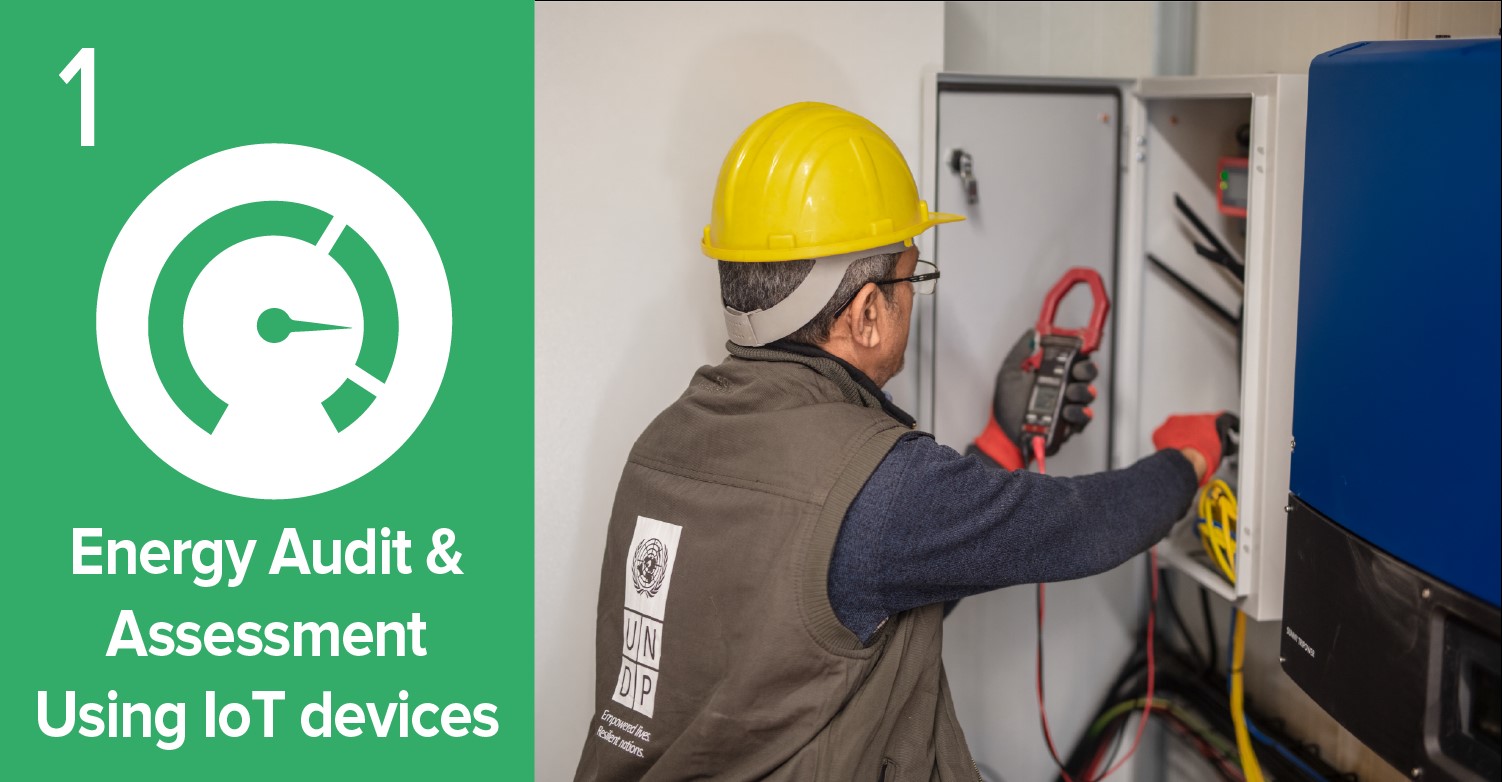 | Step 1 - Energy Audit & Assessment Using IoT devicesUNDP utilizes IoT sensors to gather data on energy usage, site conditions, electricity grid analysis, solar panel placement, and generator information. E-mobility projects undergo similar audits. While the data collection process can be completed online, beneficiaries can request an on-site assessment. Other stakeholders may also participate in site selection and the authorization of IoT device installation and data collection. Typical duration: 4 weeks |
Step 2 - Business CaseUNDP develops a business case to evaluate project feasibility based on technical, economic, and environmental aspects gathered in Step 1. This allows for informed decision-making. The completion of this step occurs online and may require approval from other stakeholders, depending on the project. Typical duration: 4 weeks |  |
 | Step 3 - Procurement & Site PreparationUNDP creates all required technical documents and works with the procurement teams to publish and evaluate technical bids. Before the bidding process begins, all interested vendors conduct a site visit to acquire relevant information. Active project management and support from the beneficiary are crucial during this step. Completion is online, depending on the project, other stakeholders may also partake in the vendor site visit and the bidding process. Typical duration: 8-10 weeks |
Step 4 - Site SurveyThe selected vendor, supported by the beneficiary, conducts an on-site survey to analyze all aspects affecting implementation, including construction, wiring, shading, distances, and equipment. UNDP oversees technical aspects to ensure comprehensive reporting. Depending on the project, other stakeholders may also participate. Typical duration: 1 week | 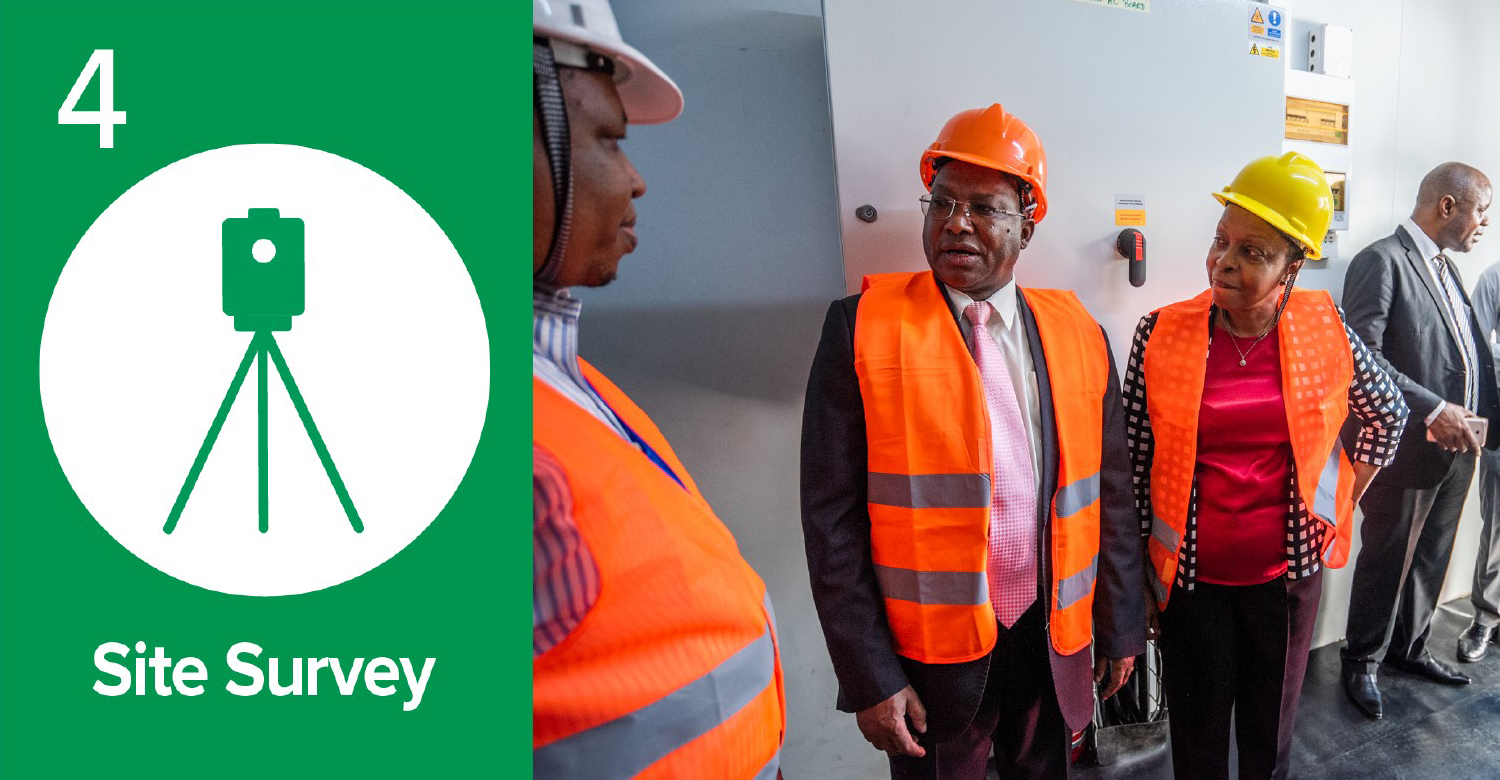 |
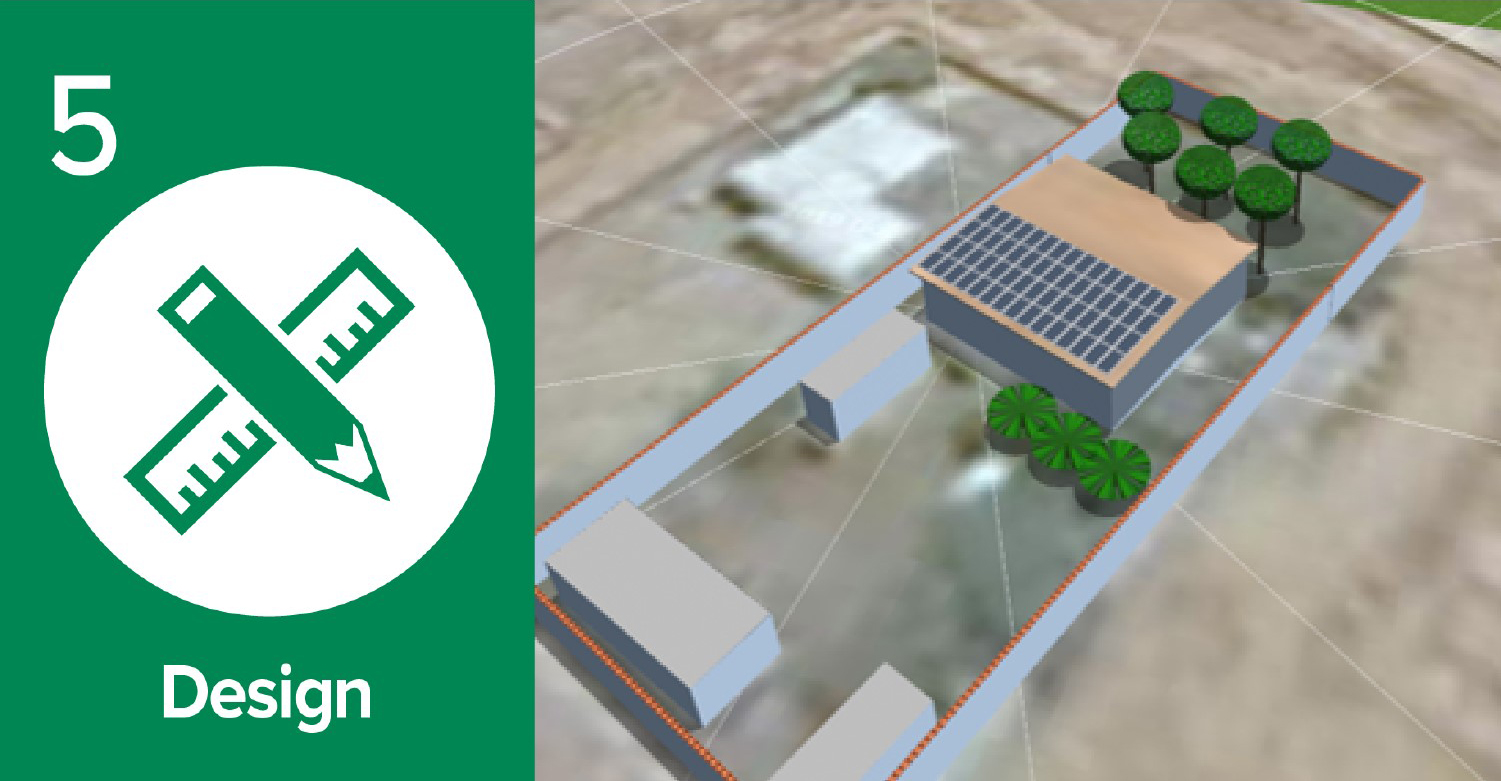 | Step 5 - DesignThe selected vendor prepares and submits the final technical system design, accounting for any site survey findings. This includes the technical design (SLD), updated project plan and timeline, and final Bill of Material (BoM) if applicable. As part of technical oversight, UNDP endorses the final design before installation. The completion of this step occurs online. Typical duration: 1 week |
Step 6 - InstallationThe vendor, with beneficiary support, conducts the installation overseen by UNDP. Regular updates, user training, and system documentation are provided. Commissioning concludes with user acceptance testing (UAT) and a compliance checklist. In the case of other stakeholders involved in the project, they will also participate in the installation's commissioning. UNDP can assist with communications and inauguration if needed.
| 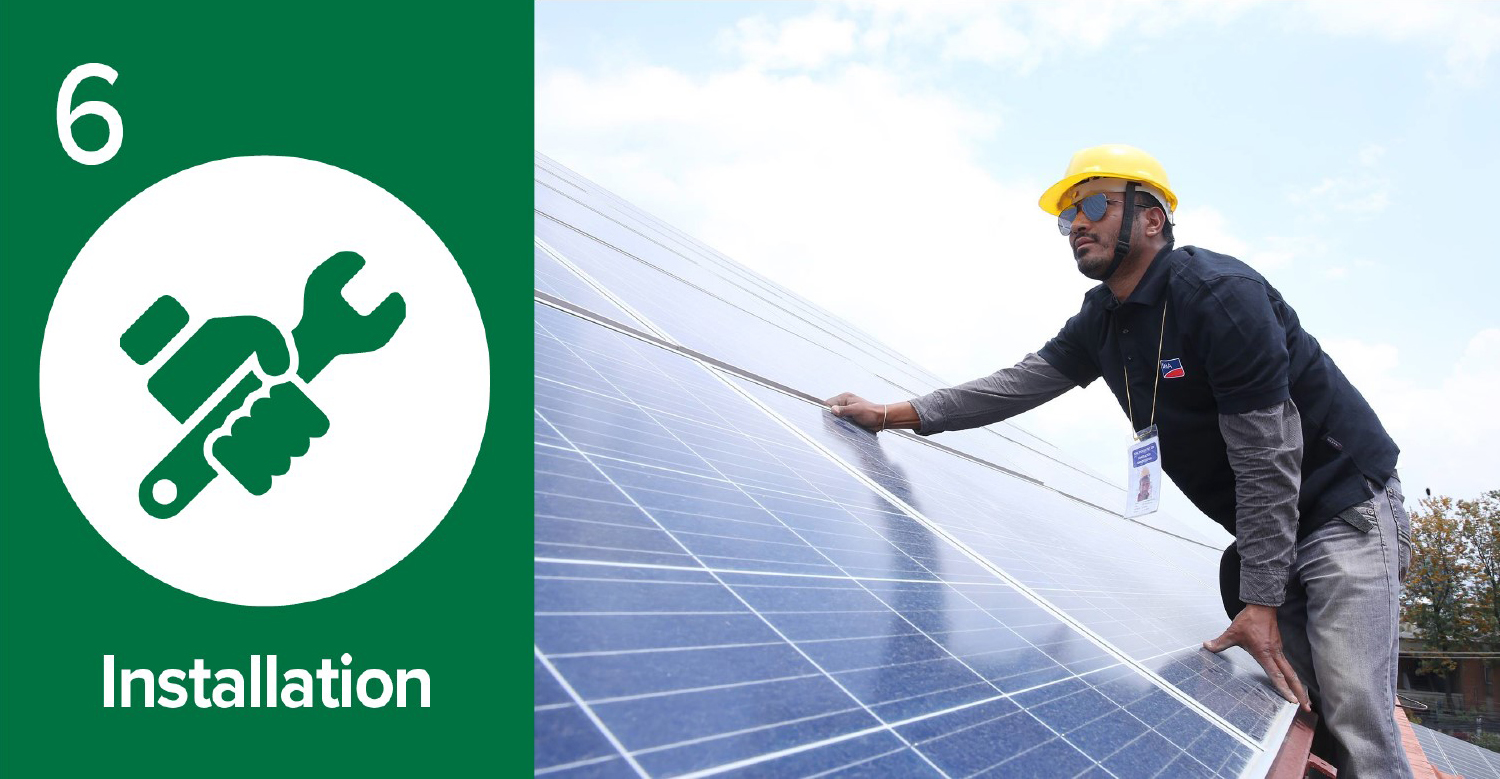 |
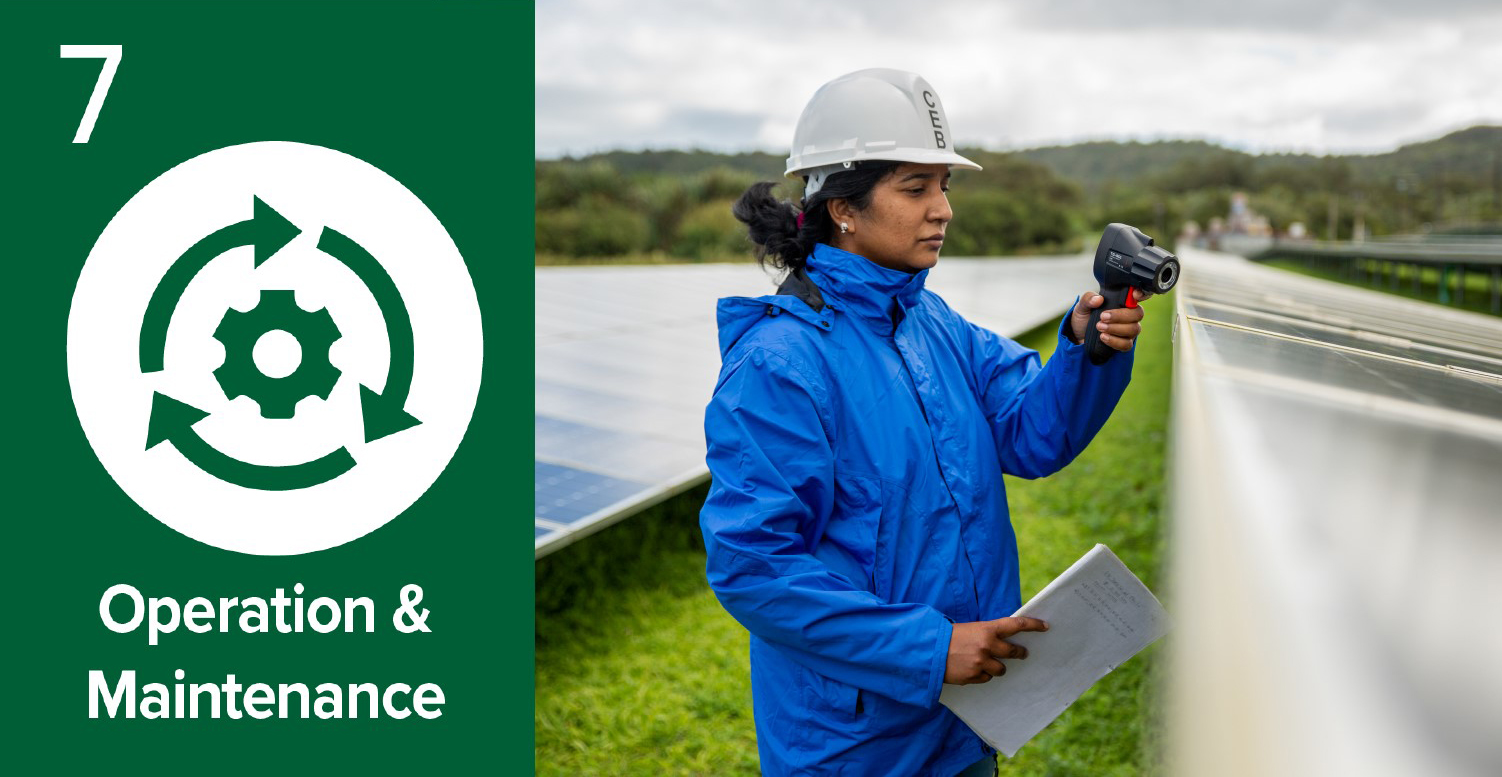 | Step 7 - Operation & MaintenanceBeneficiaries can request a Digital Twin Dashboard for real-time monitoring. UNDP remotely monitors the system for three years providing bi-annual reports. Local partners offer prompt assistance, and the vendor provides bi-annual maintenance for three years. Long-term maintenance is managed locally after this period.
|
Smart Facilities partners


 Locations
Locations